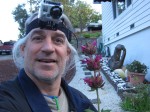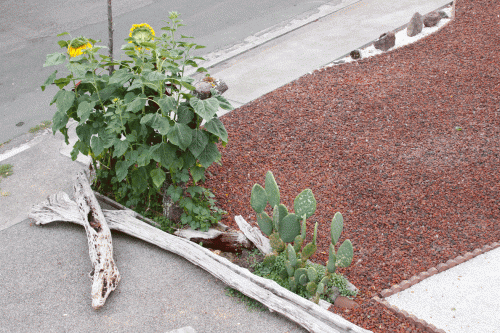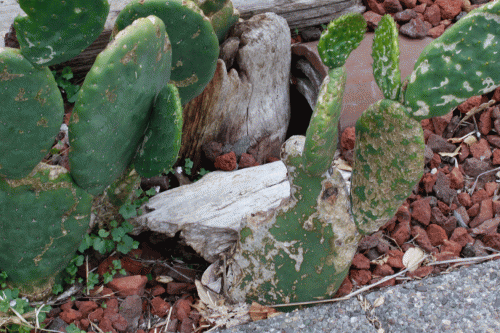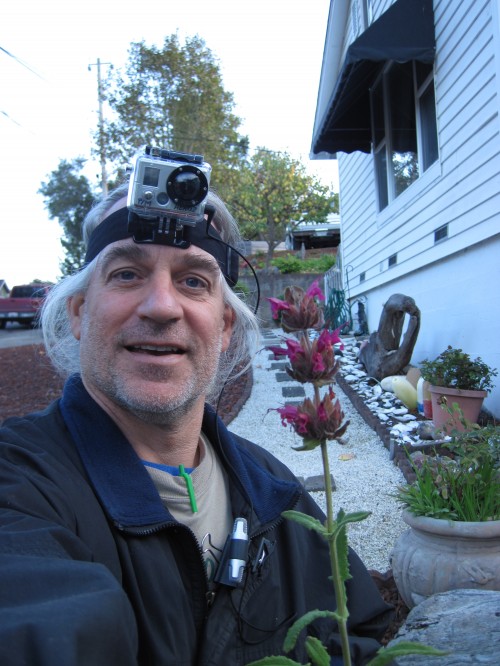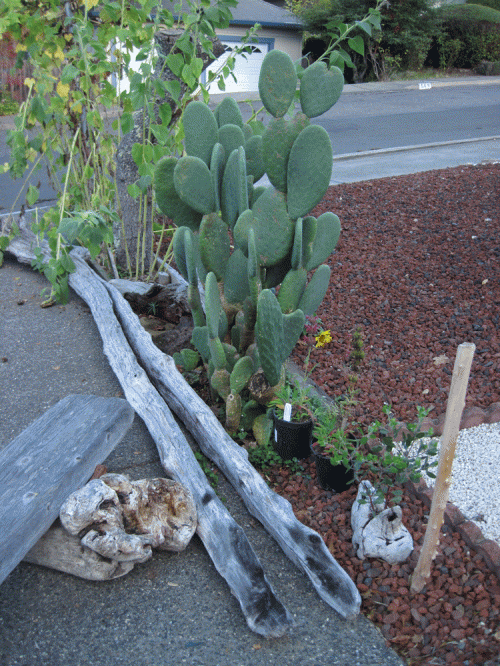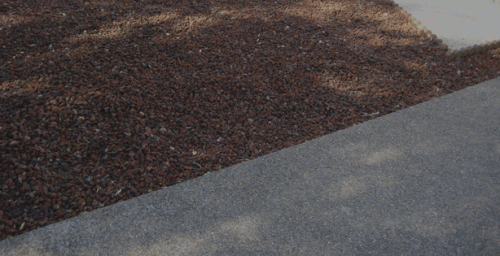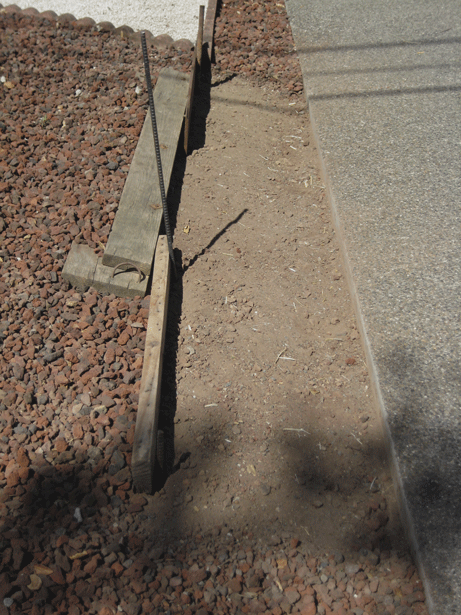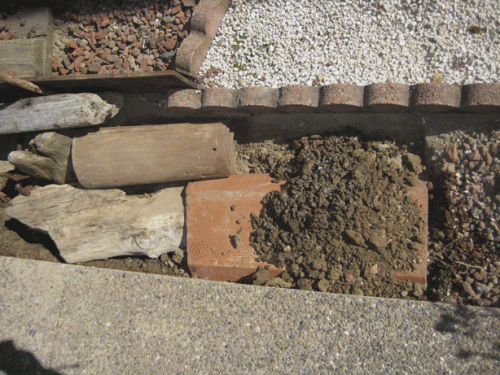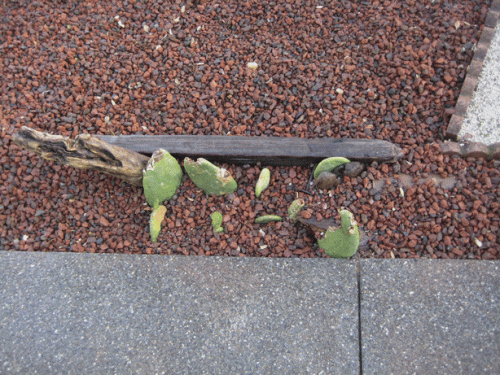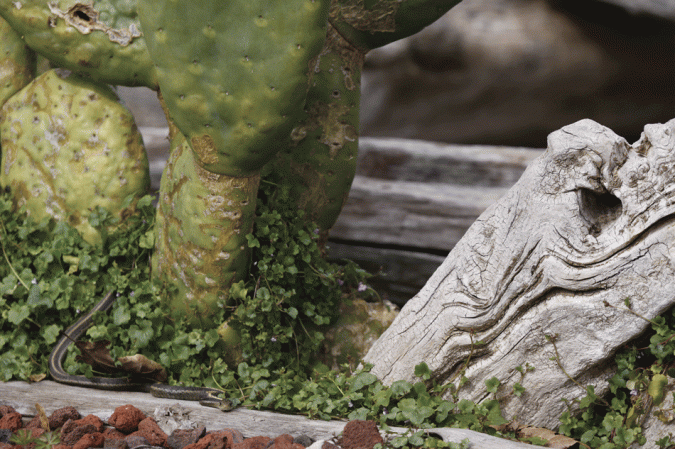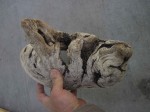
First a video re “Planting Salvia spathacea next to Monica Manzanita Mannequin 2 of 2”, then some pics of “Monica Manzanita Mannequin animal habitat installation” (below the video):
Planting Salvia spathacea next to Monica Manzanita Mannequin 2 of 2 (video):
Monica Manzanita Mannequin animal habitat installation and planting Salvia spathacea (pics):
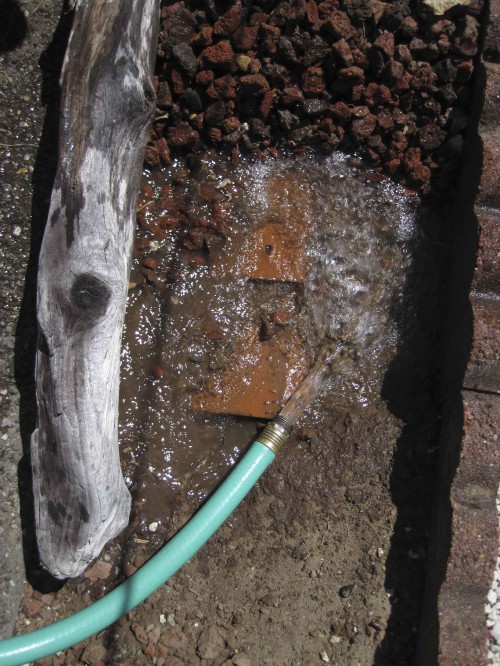 The west end of Cacti Caverns is cleared of lavarock. The “Monica” (species name) manzanita (Spanish for “little apple”) shrub will be planted on top of Cacti Caverns’ terra cotta flat roofing tiles.
The west end of Cacti Caverns is cleared of lavarock. The “Monica” (species name) manzanita (Spanish for “little apple”) shrub will be planted on top of Cacti Caverns’ terra cotta flat roofing tiles.
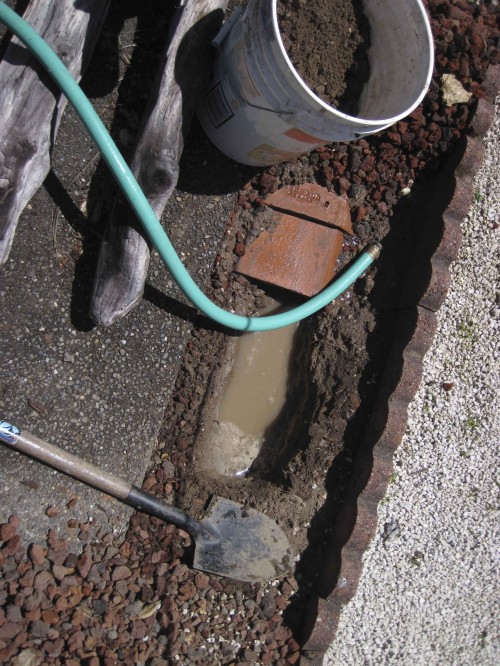 The lower tile is slide under the top tile to make room for Monica Manzanita Mannequin animal habitat. Poor quality soil (high percentage of adobe clay) is removed to make room for planting (better quality) soil.
The lower tile is slide under the top tile to make room for Monica Manzanita Mannequin animal habitat. Poor quality soil (high percentage of adobe clay) is removed to make room for planting (better quality) soil.
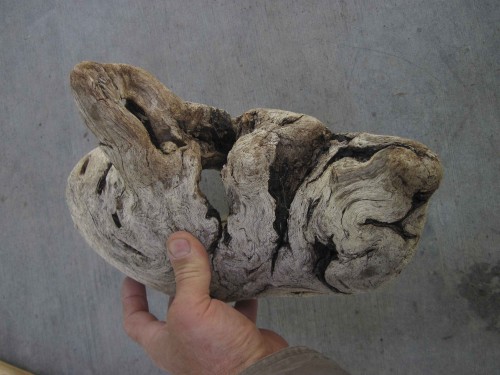 Tony’s last conversation with Monica Mannequin. Note the wavy wood grain, identifying the mass as a tree root burl. The “nose”, or upright projection (Hey, work with me here!), is the base of the trunk, which starts out a straight grain.
Tony’s last conversation with Monica Mannequin. Note the wavy wood grain, identifying the mass as a tree root burl. The “nose”, or upright projection (Hey, work with me here!), is the base of the trunk, which starts out a straight grain.
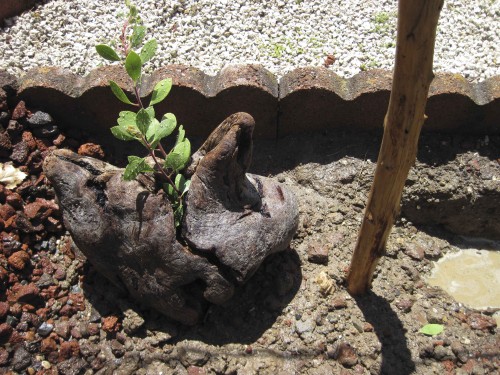 Monica Manzanita threaded through Mannequin. Soon critters will inhabit the inside vaulted ceilings and come and go through Mannequin’s crevices. A pole planted next to MMM serves as a handhold while traversing the walk path.
Monica Manzanita threaded through Mannequin. Soon critters will inhabit the inside vaulted ceilings and come and go through Mannequin’s crevices. A pole planted next to MMM serves as a handhold while traversing the walk path.
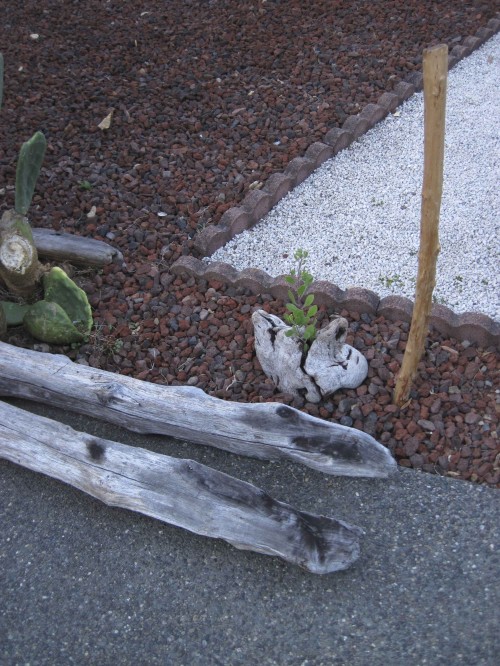 Monica manzanita a month after being planted. Looks happy to me! Not over watering is probably the biggest challenge this manzanita shrub will offer here in California, where it is a native plant.
Monica manzanita a month after being planted. Looks happy to me! Not over watering is probably the biggest challenge this manzanita shrub will offer here in California, where it is a native plant.
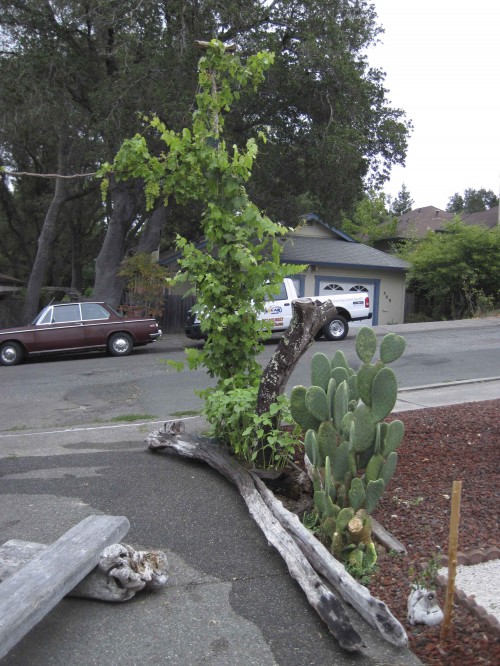 After two healthy months, the typically very slowly growing shrub looks to be establishing itself. Grape Overpass is sporting bunches of green grapes that will ripen in a couple of months.
After two healthy months, the typically very slowly growing shrub looks to be establishing itself. Grape Overpass is sporting bunches of green grapes that will ripen in a couple of months.
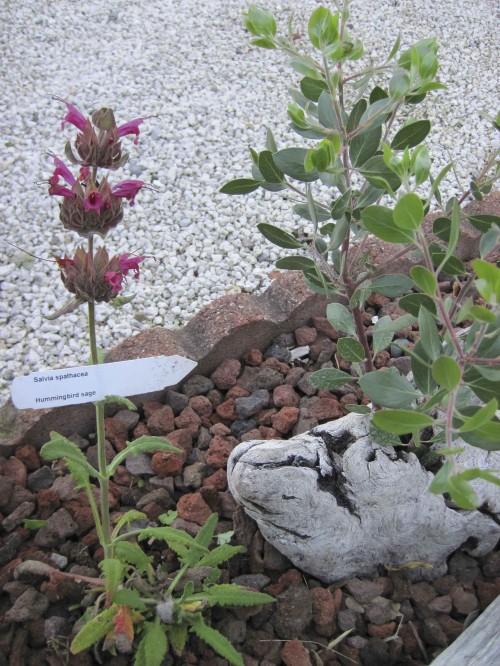 Hummingbird sage (Salvia spathacea) planted next to Monica Manzanita Mannequin habitat. The salvia, like the manzanita, is also a native plant that will thrive in the dry hydrozone garden bed.
Hummingbird sage (Salvia spathacea) planted next to Monica Manzanita Mannequin habitat. The salvia, like the manzanita, is also a native plant that will thrive in the dry hydrozone garden bed.
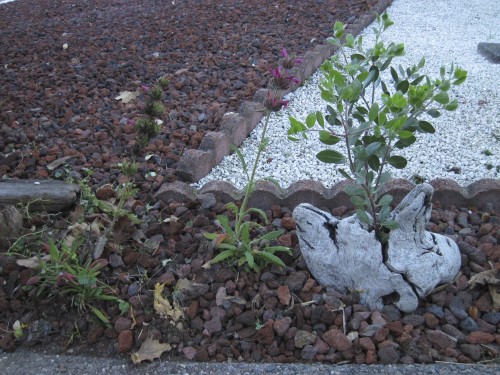 Both hummingbird sage (Salvia spathacea) pose for a photo op next to Monica Manzanita Mannequin habitat. The critters will be happy!, especially in years to come when the manzanita tree canopies its undergrowth of hummingbird sage.
Both hummingbird sage (Salvia spathacea) pose for a photo op next to Monica Manzanita Mannequin habitat. The critters will be happy!, especially in years to come when the manzanita tree canopies its undergrowth of hummingbird sage.
Happy animal habitat installations. See you tomorrow.
Tony

